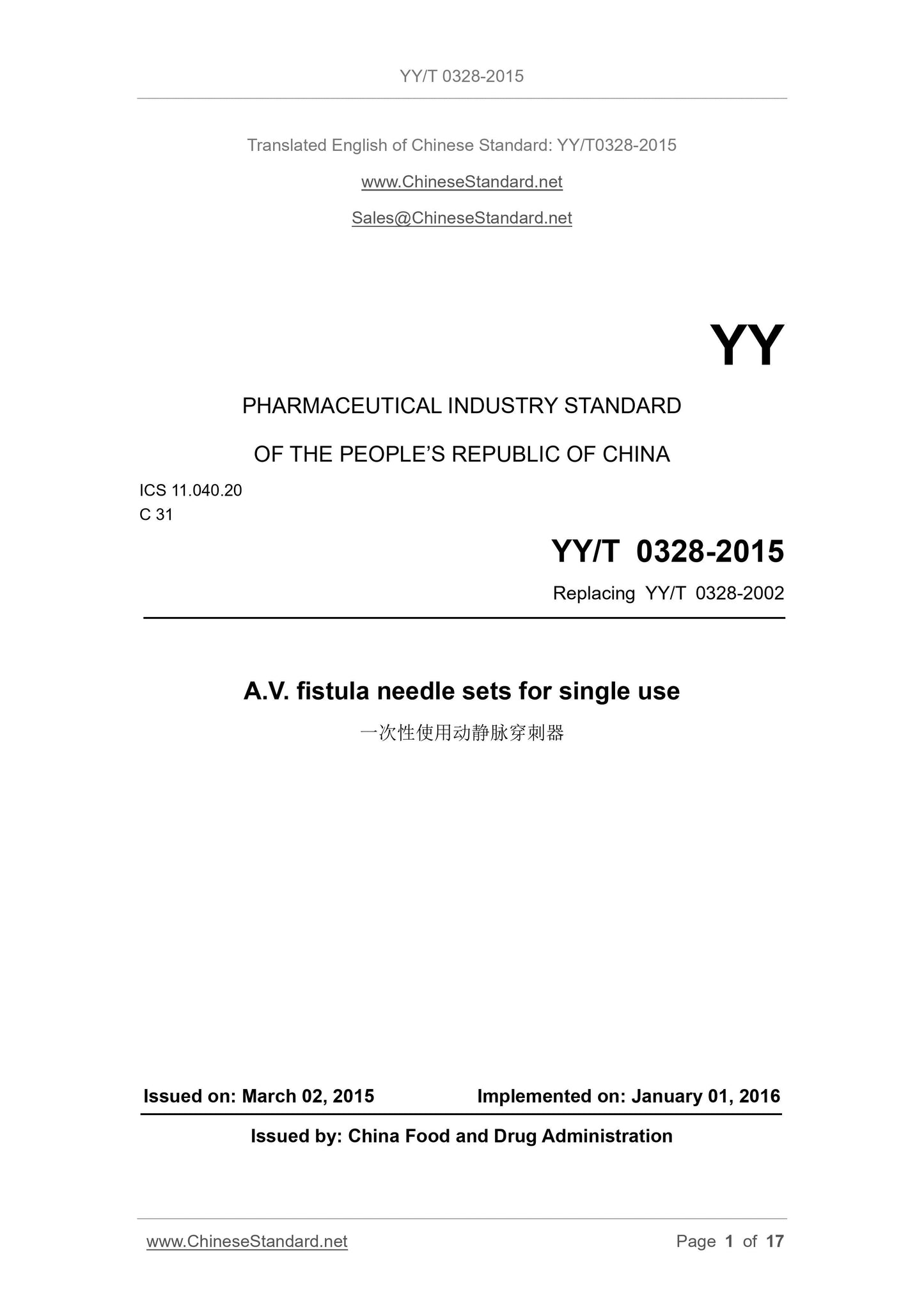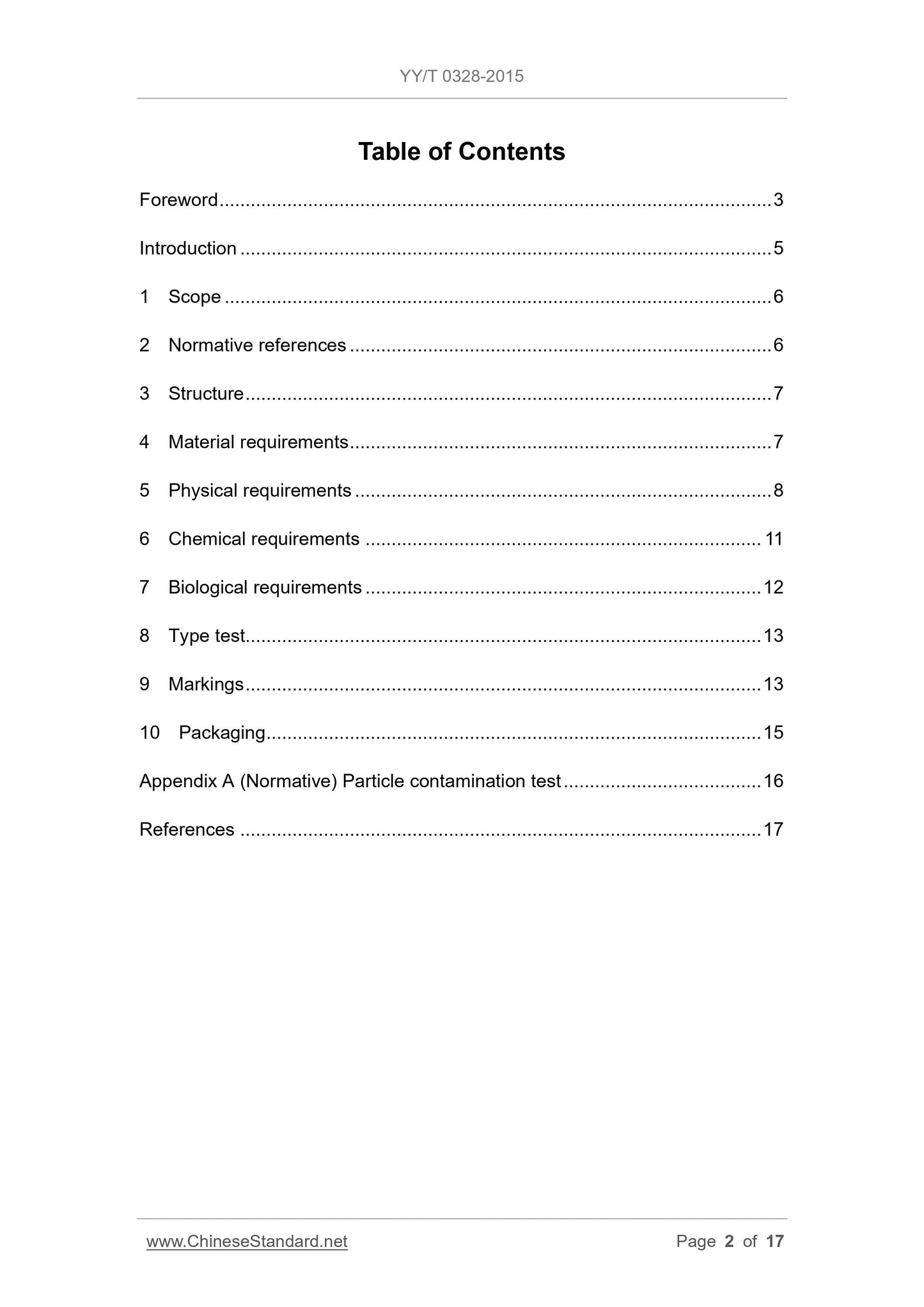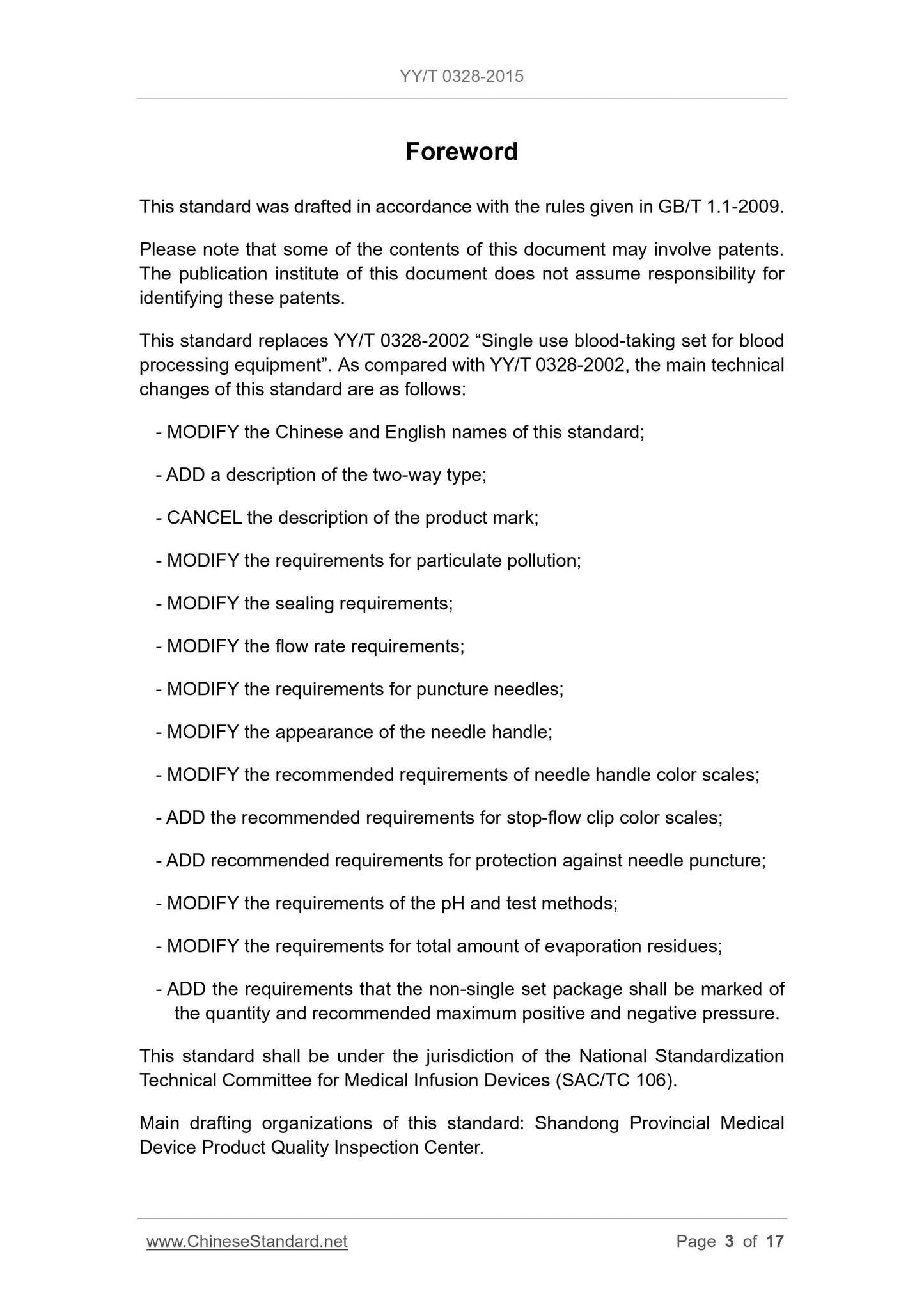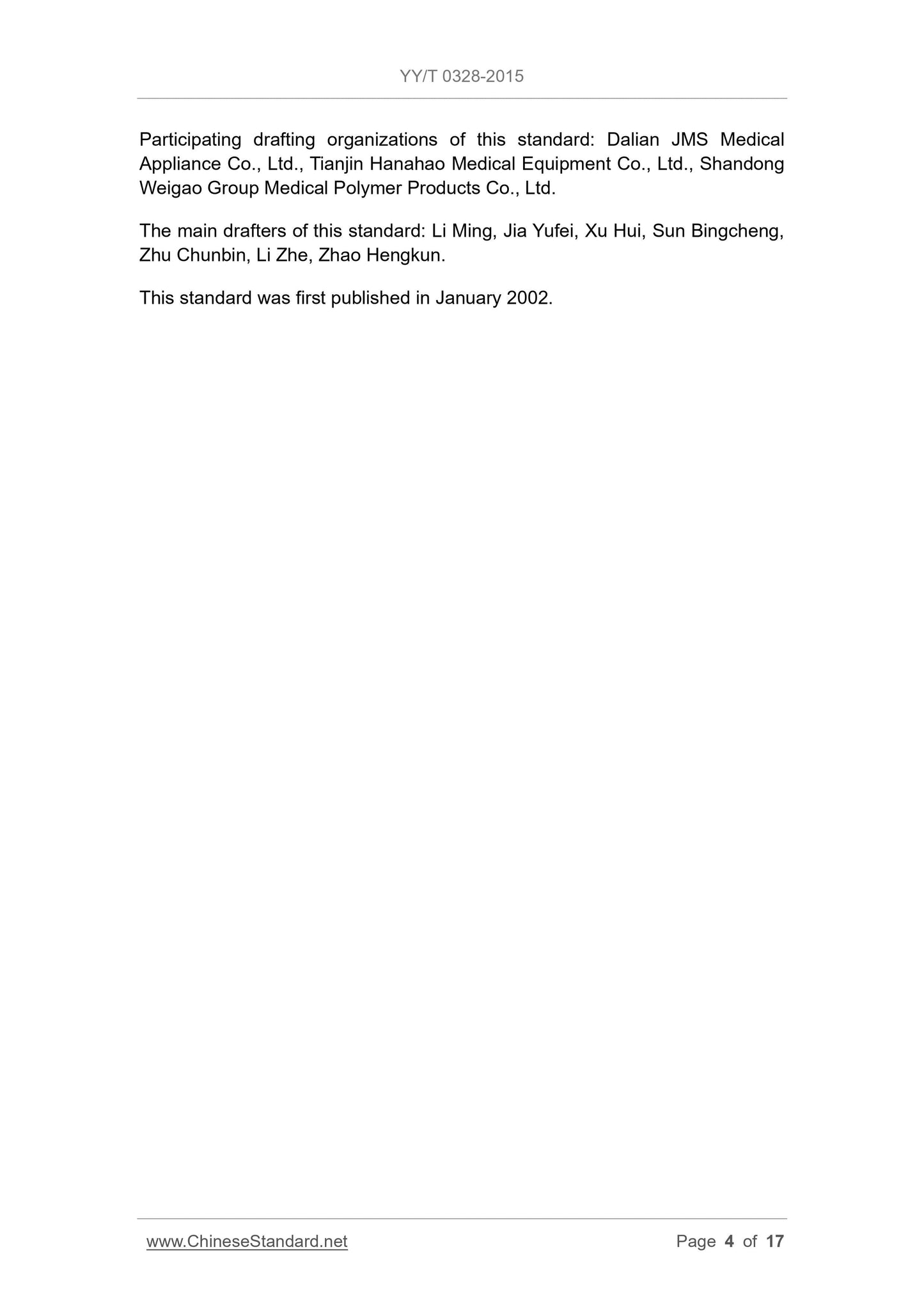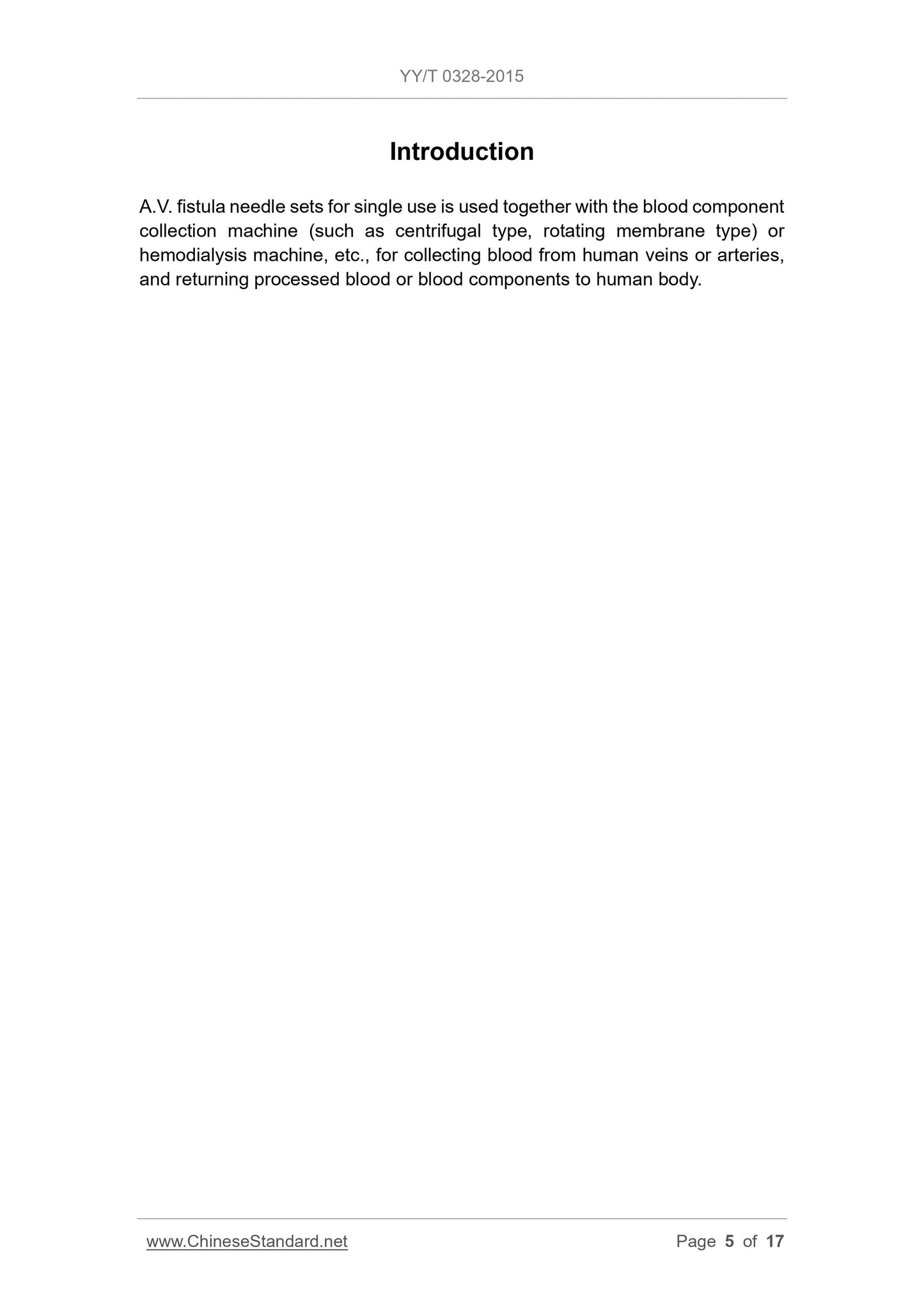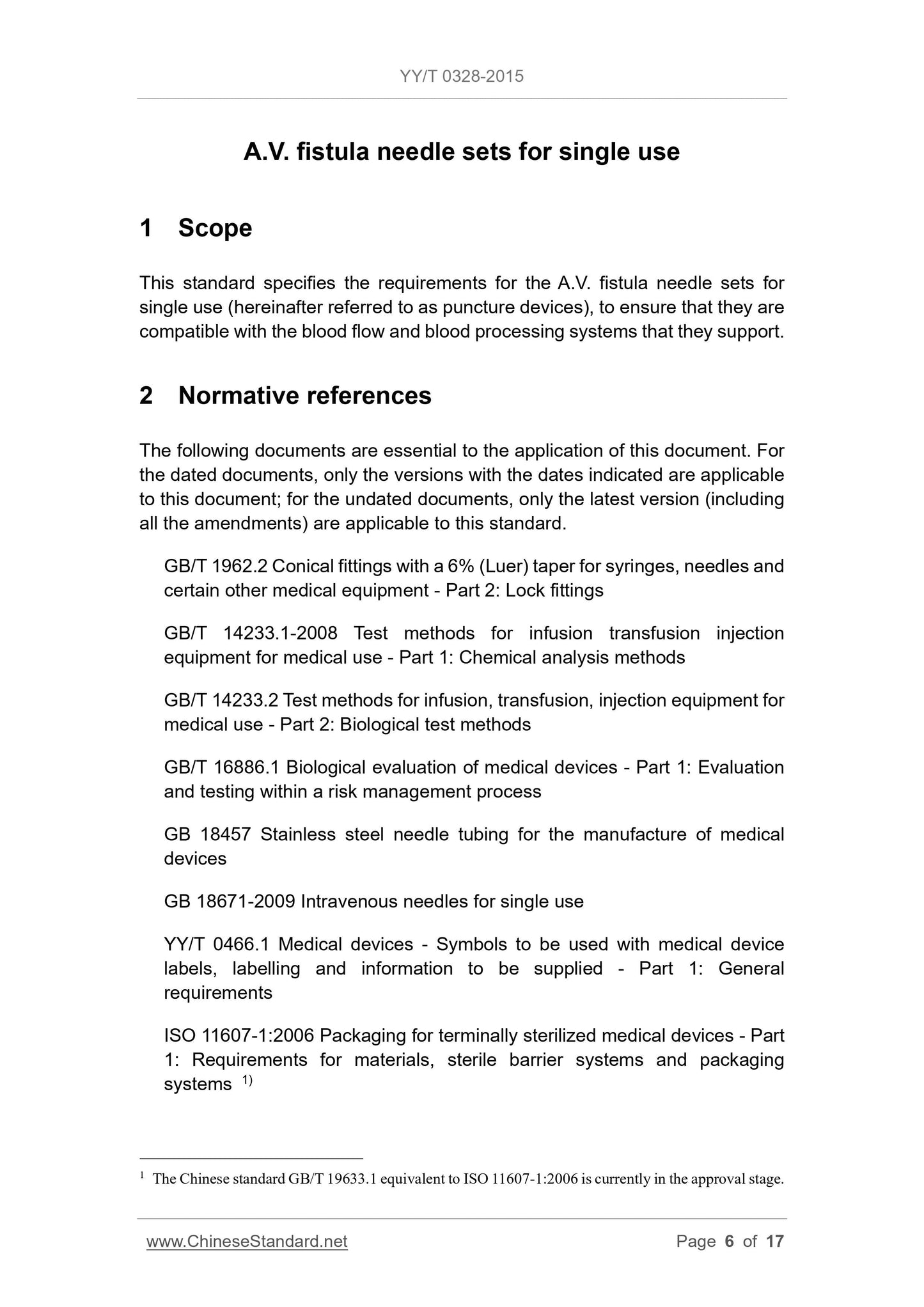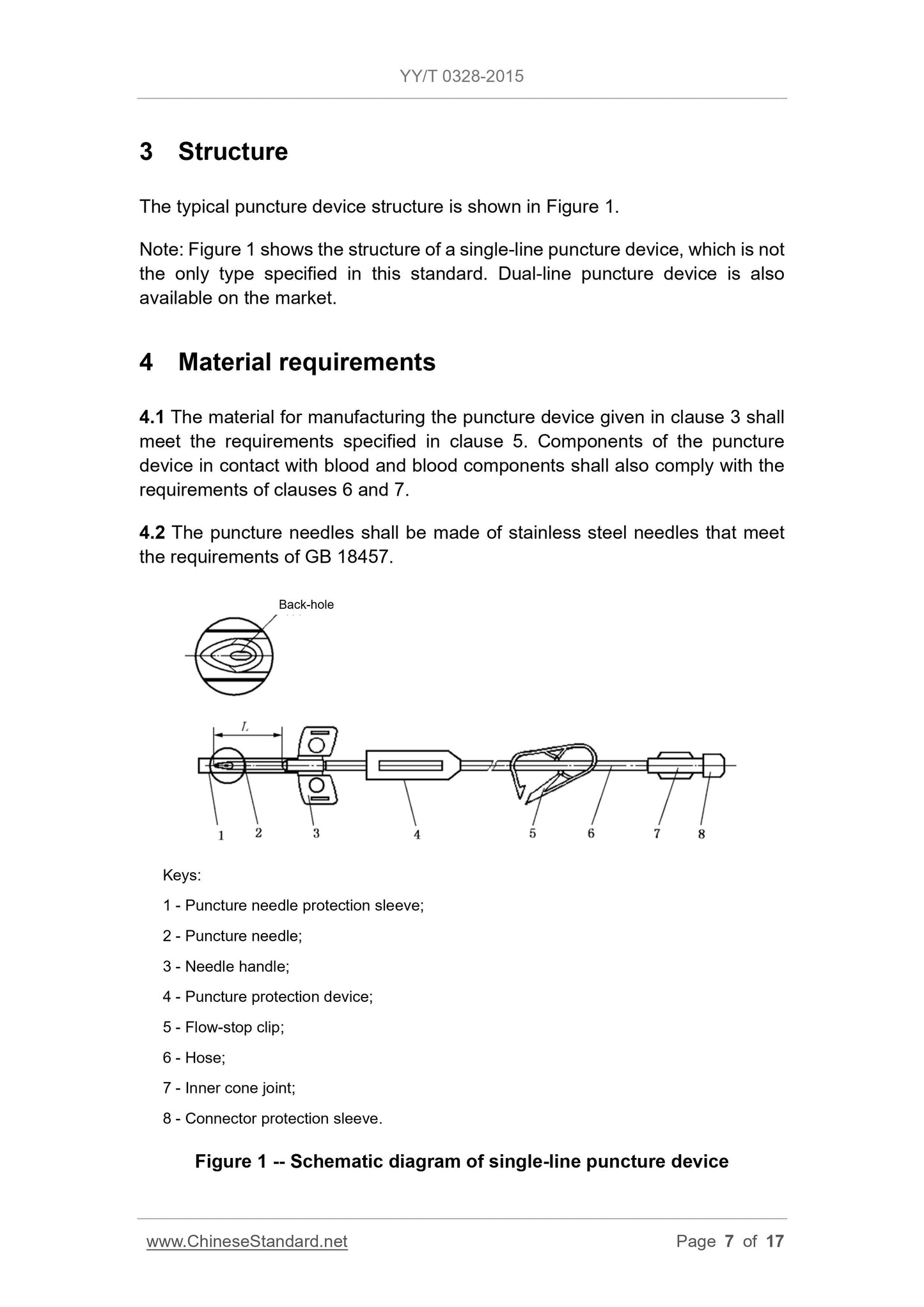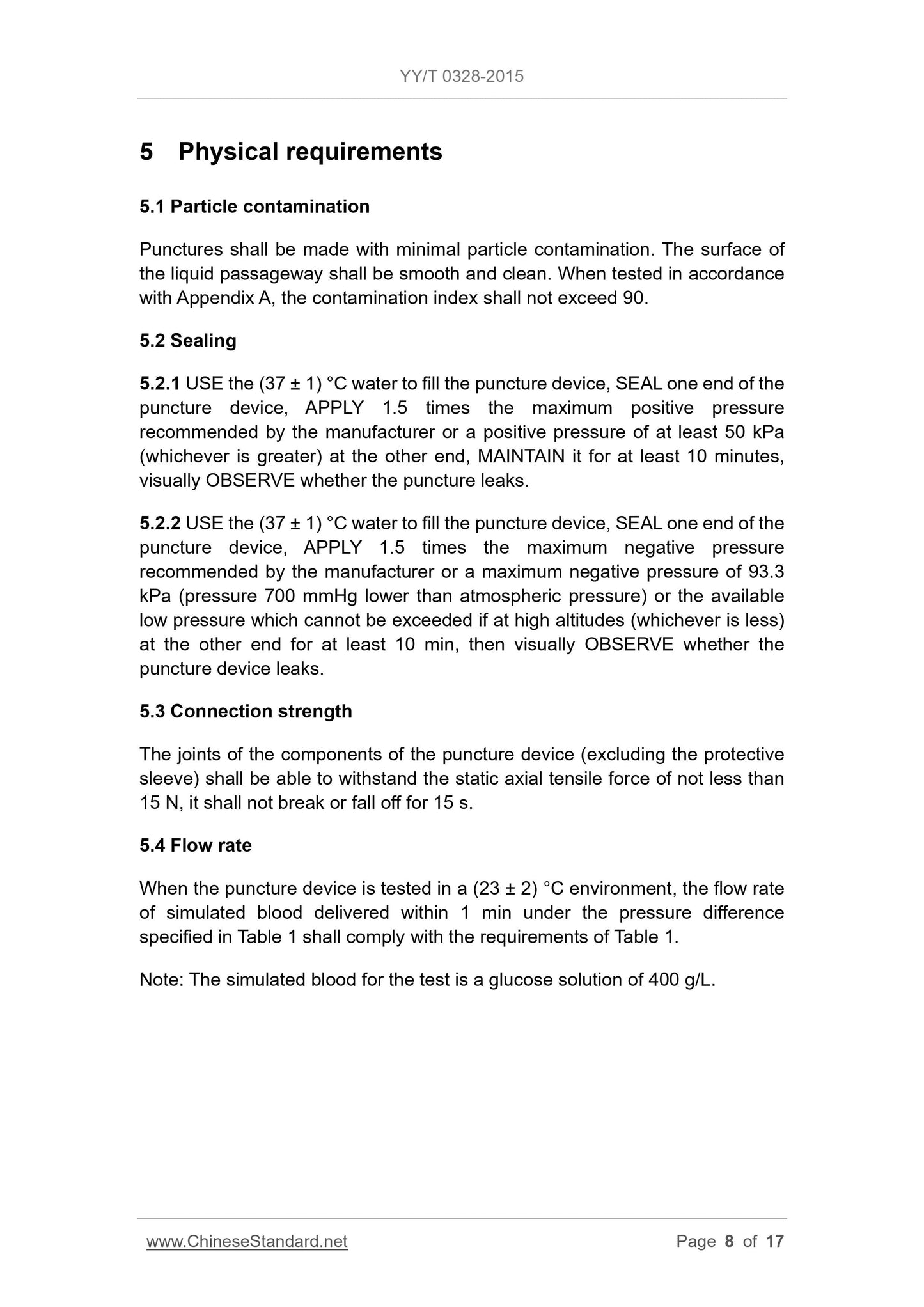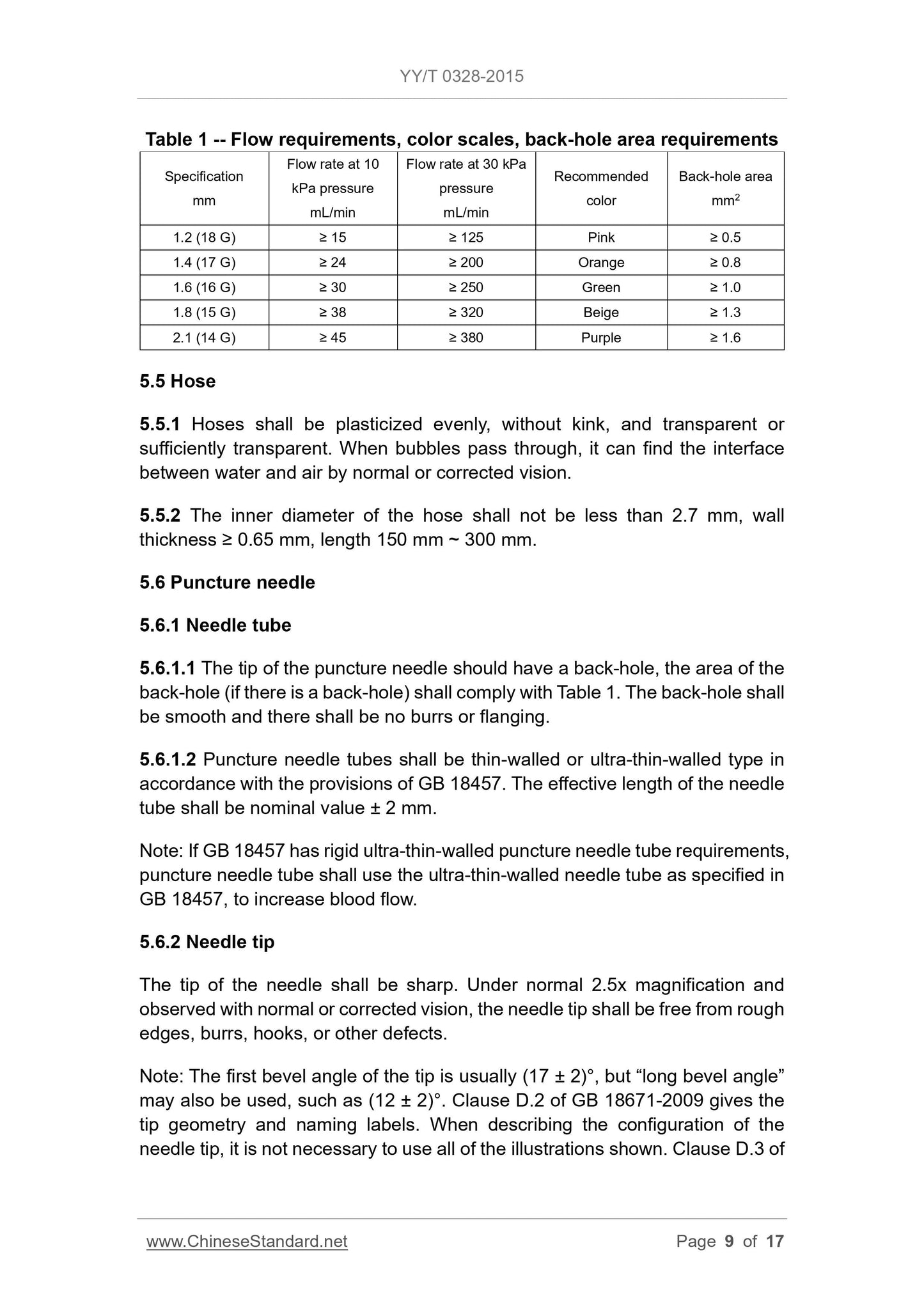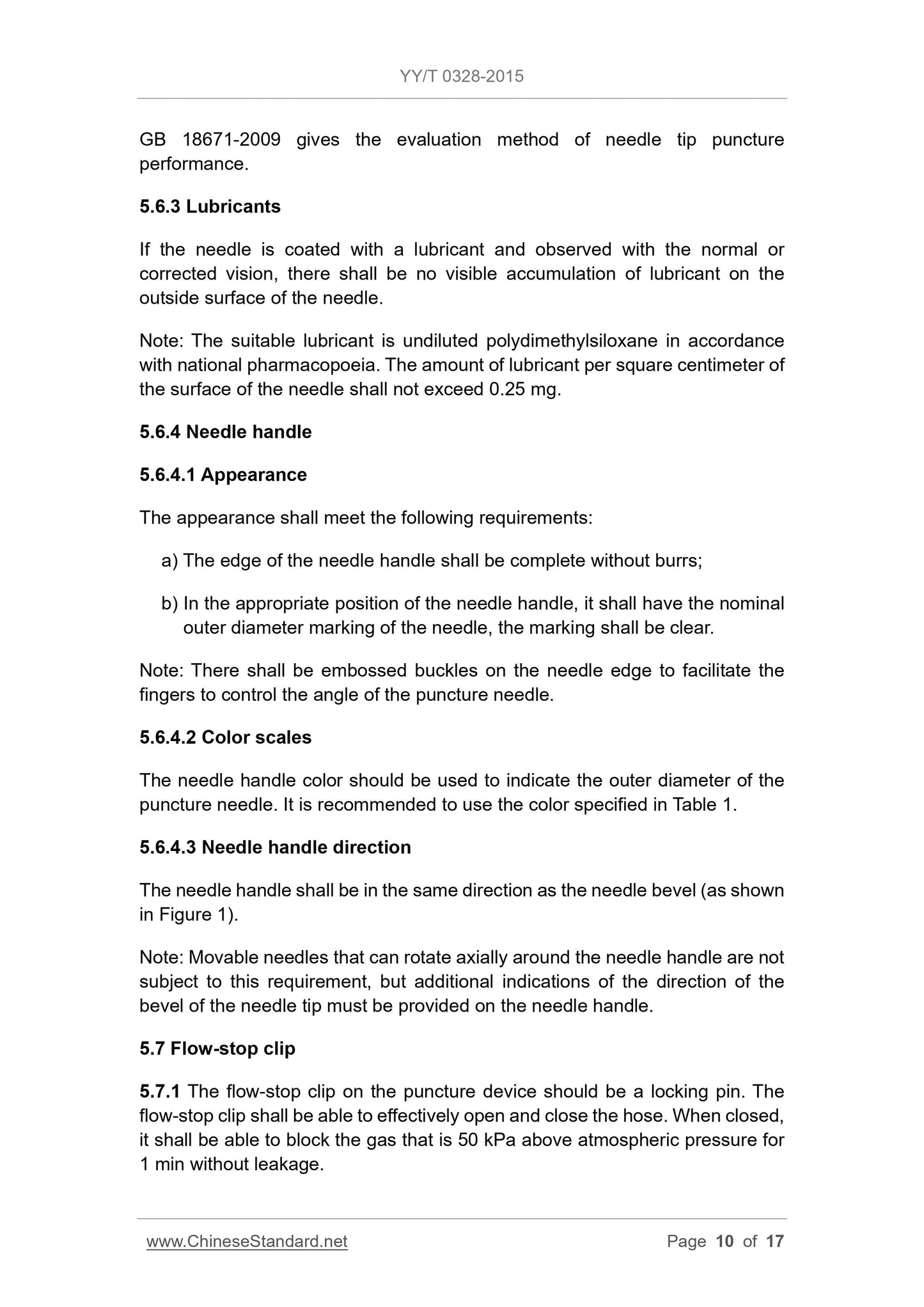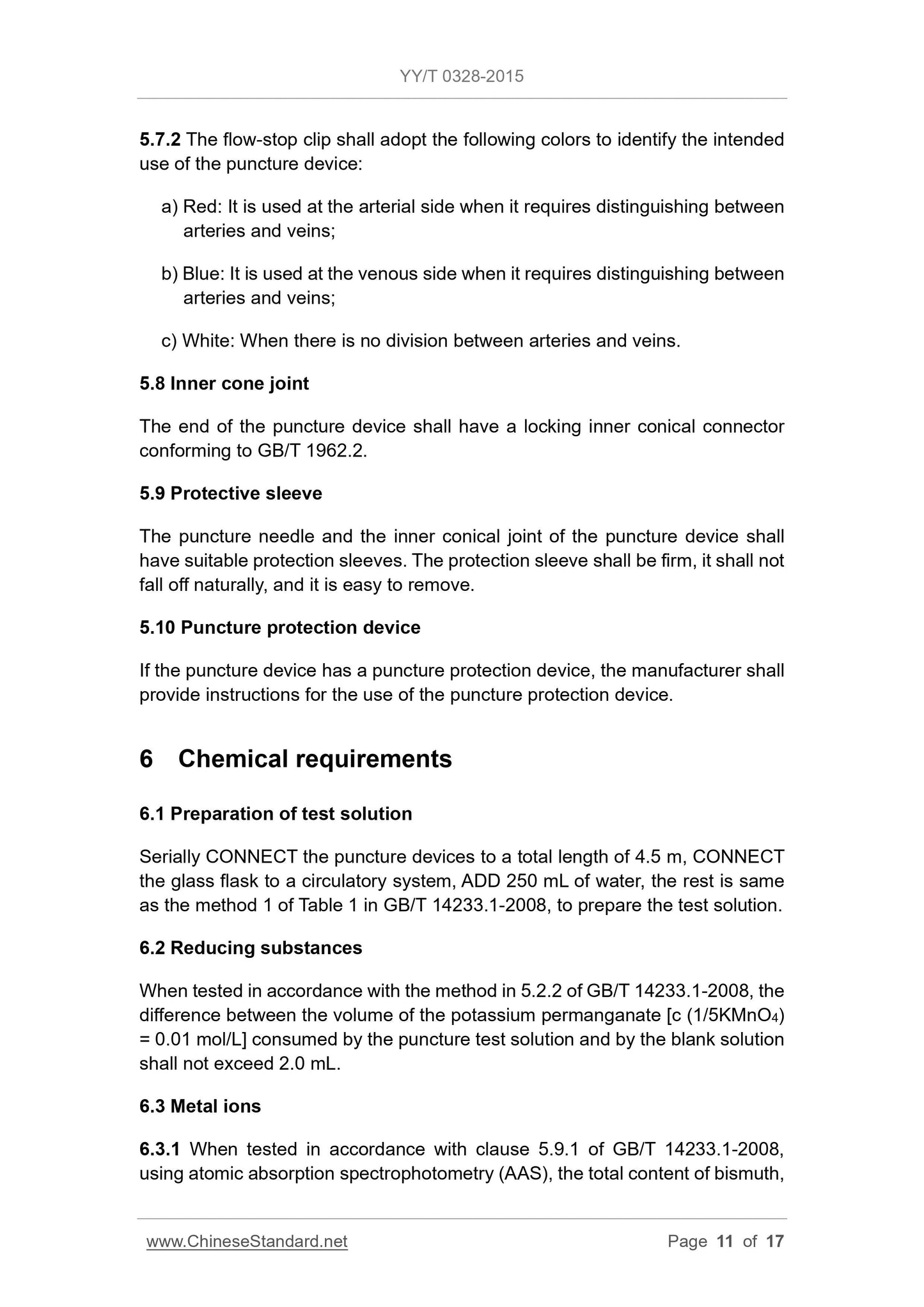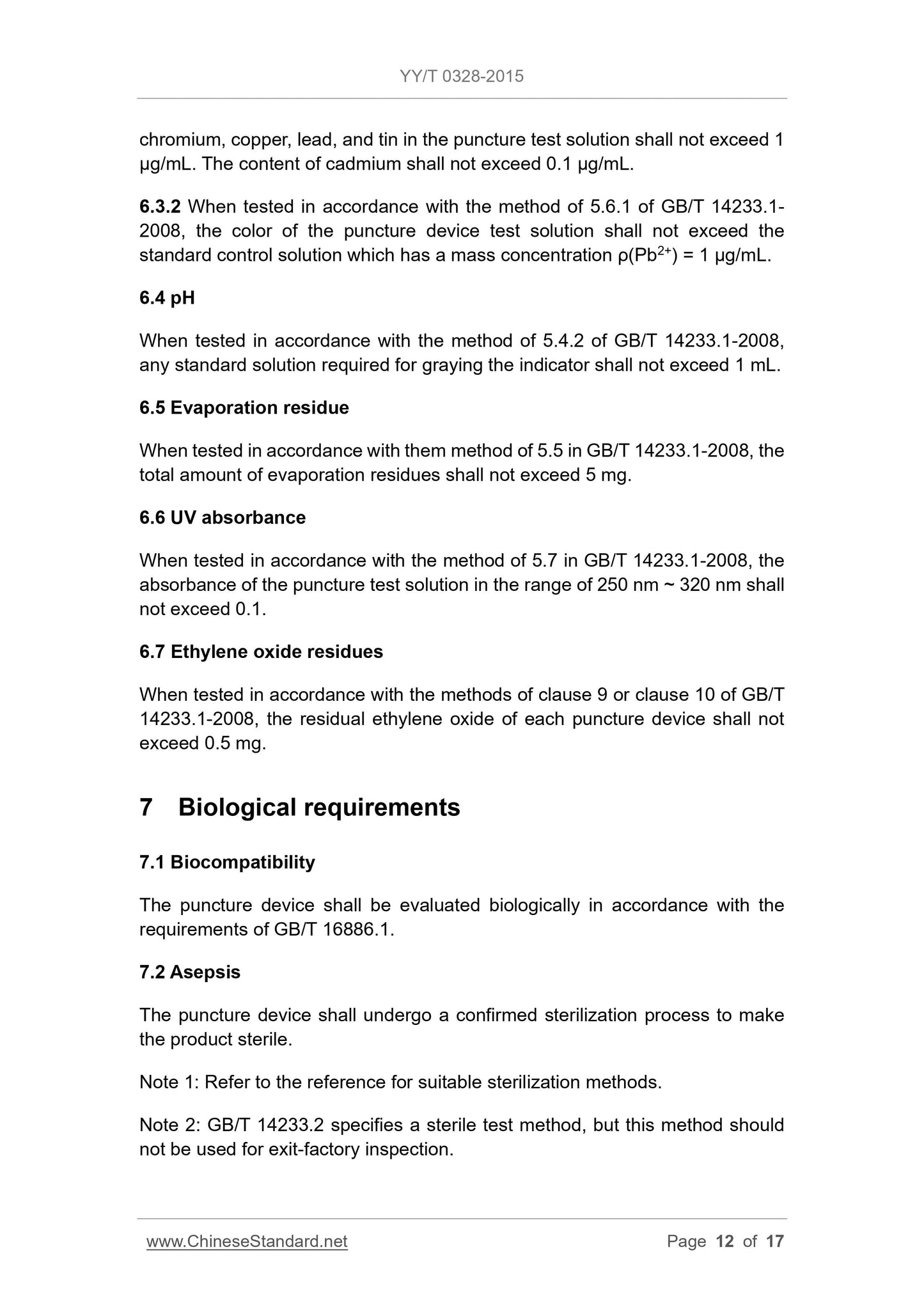1
/
of
12
www.ChineseStandard.us -- Field Test Asia Pte. Ltd.
YY/T 0328-2015 English PDF (YY/T0328-2015)
YY/T 0328-2015 English PDF (YY/T0328-2015)
Regular price
$150.00
Regular price
Sale price
$150.00
Unit price
/
per
Shipping calculated at checkout.
Couldn't load pickup availability
YY/T 0328-2015: A.V. fistula needle sets for single use
Delivery: 9 seconds. Download (and Email) true-PDF + Invoice.Get Quotation: Click YY/T 0328-2015 (Self-service in 1-minute)
Newer / historical versions: YY/T 0328-2015
Preview True-PDF
Scope
This standard specifies the requirements for the A.V. fistula needle sets forsingle use (hereinafter referred to as puncture devices), to ensure that they are
compatible with the blood flow and blood processing systems that they support.
Basic Data
| Standard ID | YY/T 0328-2015 (YY/T0328-2015) |
| Description (Translated English) | A.V. fistula needle sets for single use |
| Sector / Industry | Medical Device and Pharmaceutical Industry Standard (Recommended) |
| Classification of Chinese Standard | C31 |
| Classification of International Standard | 11.040.20 |
| Word Count Estimation | 12,113 |
| Date of Issue | 2015-03-02 |
| Date of Implementation | 2016-01-01 |
| Older Standard (superseded by this standard) | YY 0328-2002 |
| Quoted Standard | GB/T 1962.2; GB 8369; GB/T 14233.1-2008; GB/T 14233.2; GB/T 16886.1; GB 18457; GB 18671-2009; YY/T 0466.1; ISO 11607-1-2006 |
| Regulation (derived from) | The State Food and Drug Administration Announcement 2015 No. 8 |
| Issuing agency(ies) | State Food and Drug Administration |
| Summary | This Standard specifies the use of disposable vein puncture (hereinafter referred to as the piercer) requirements to ensure the support of the trail and blood processing systems to adapt. |
Share
